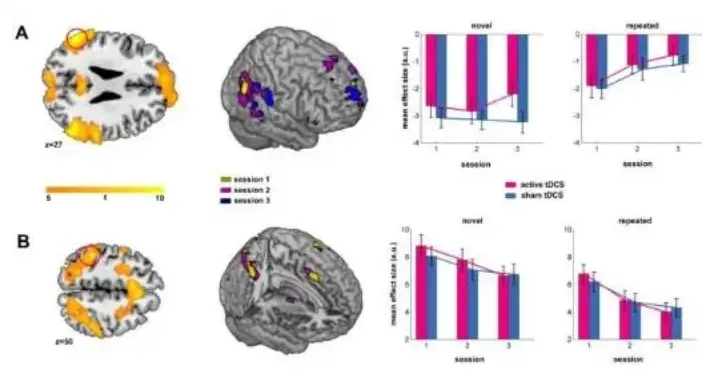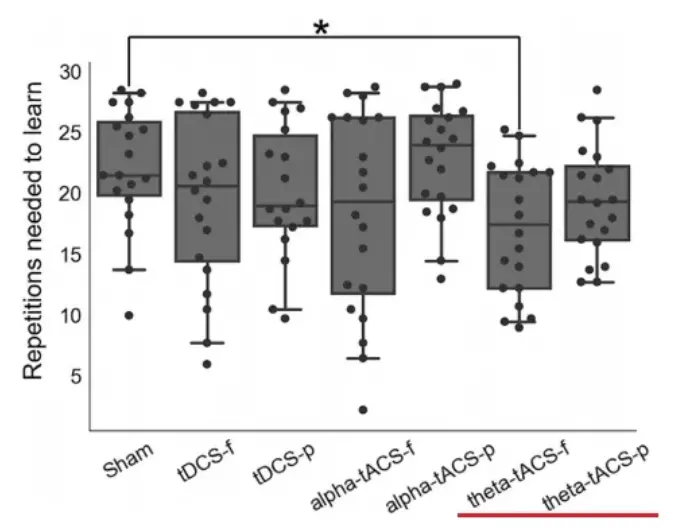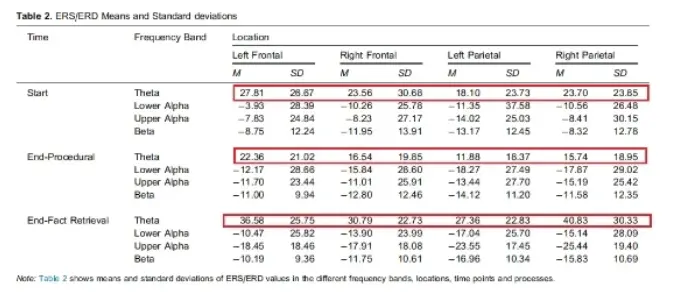2023-11-10
In addition to being used in the adjuvant treatment of ADHD and other diseases, tDCS has also been greatly developed in the application of assisting in improving academic performance in recent years. Among the developed countries in Europe and the United States, Germany and the United Kingdom are the most widely used and the most in-depth.
For example, Hauser, TobiasU of the Max Planck Univ Coll London. Professor, in a controlled trial of 40 students, it was found that the intervention of tDCS technology improved the students' ability to solve complex problems (such as four mixed operations, power, root, trigonometric operations and other complex computational tasks), and knowledge retrieval and storage (such as the multiplication table, which must be mastered by primary school students).
The study also used magnetic resonance imaging (fMRI) technology to find that after tDCS intervention, students' bilateral angular gyrus (angular gyrus is the visual and language center, which has a significant impact on reading speed, short-term memory and other functions) medial and lateral prefrontal cortex (also known as the prefrontal cortex, is the "headquarters" of the brain, The connection and activity of higher level thinking, such as knowledge retrieval and decision-making, are significantly enhanced, laying the foundation for further precise intervention of tDCS technology in the future.

Functional magnetic resonance imaging (fMRI) technique results
A team of researchers led by Professor Jochen A. Mosbacher of the University of Graz in Austria and Professor Stefan Halverscheid of the Institute of Mathematics at the University of Gottingen studied 137 students in different grades. A comparative study of three groups of intervention schemes was conducted.
The results showed that θ-band transcranial alternating current intervention (tACS-θ) had the most obvious effect, mainly manifested in:
1, improve the learning efficiency, especially in the new knowledge learning, can more quickly establish a connection with the knowledge;
2, improve the computing power, the calculation accuracy and calculation time have been significantly improved;
3, improve the anti-interference ability, especially in the exam, encounter interference (including the noise interference deliberately created by the test personnel, deliberately set in the test questions of the super topic interference) can still be stable play.

As shown in the figure above, the results of the number of repeated searches (such as looking forward to concepts and examples) required by each group of students in the process of learning new knowledge were counted, and the tACS-θ band intervention group had the least number of repeated searches.

As shown in the figure above, to verify the relationship between test scores and various electrical changes in the brain for different interventions, The researchers compared the changes of various EEG bands (θ-theta, low-alpha -lower-alpha, high-alpha -upper-alpha and β-bata) in the three stages of the experiment from the beginning of intervention, the end of intervention and the end of intervention (about 10 minutes).
It can be seen that the change of theta band is the most obvious. During the intervention, the frequency of θ band in each brain area was decreased. With the end of intervention, θ band of each brain area returned to the pre-intervention level or even higher. This also explains why the tACS-θ band intervention group performed better on the test.
